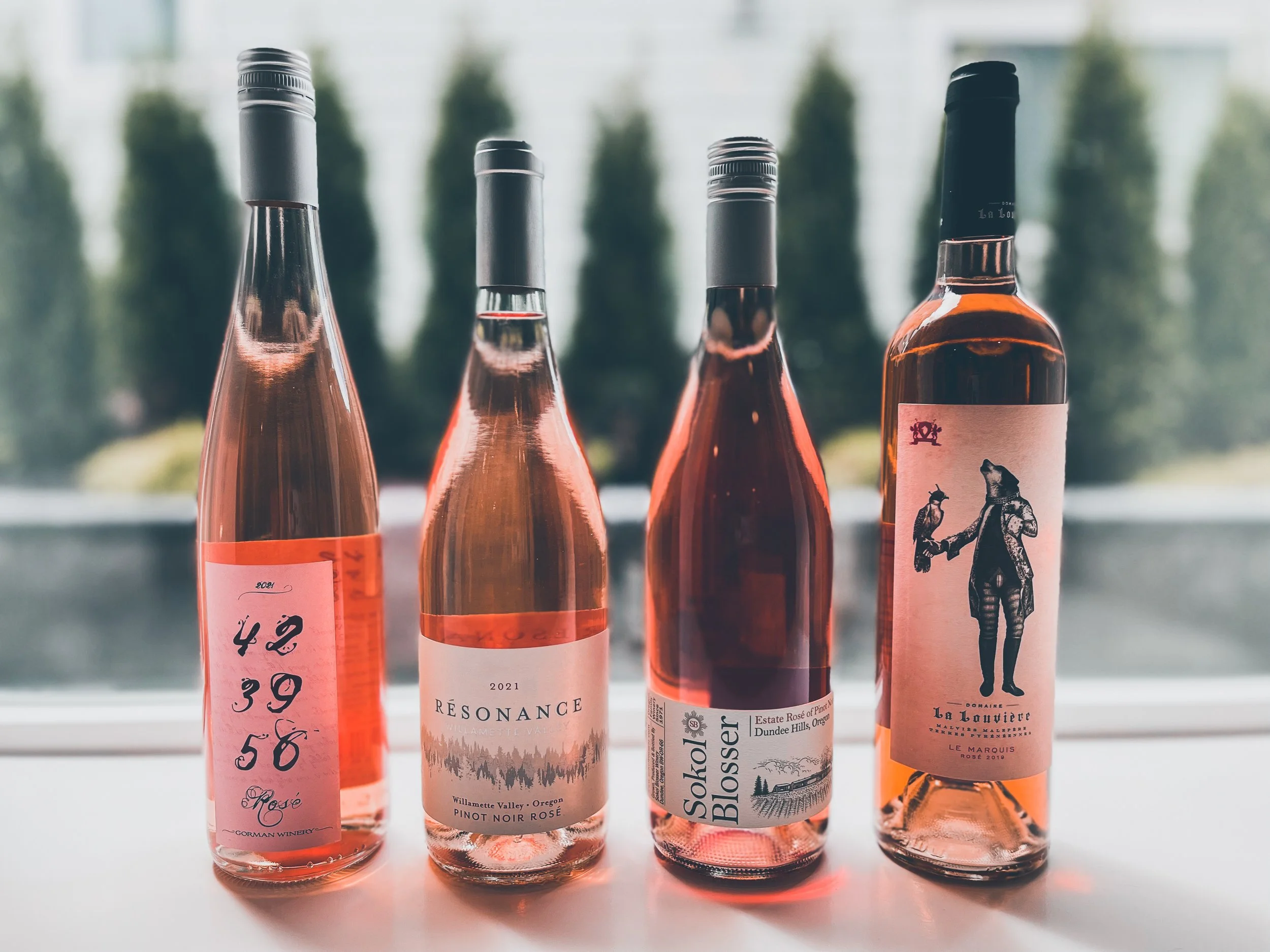Rosé All Day!
Happy National Rosé Day! To all my fellow Rosé fans out there, today really is about “Rosé All Day” and celebrating the delicious, crisp, and refreshing spring/summer beverage we all enjoy.
For those unfamiliar with what makes a Rosé', we’ll start with one of the most common FAQ - “Is Rosé just dyed white wine?” Quick answer - no, it is not dyed with food coloring or any other false means to achieve its color. Just like red wines, Rosé gets its color from the skins of the grape used to make the wineries’ particular wine (typically Grenache or Pinot Noir). What keeps it from becoming “red wine” is simply shortening the amount of time the skins mix with the juice after pressing. The right amount of time gives Rosé its beautiful color, but none of the tannins or depth that come from a longer saturation of skins and seeds. So, while Rosé is technically “dyed”, it is not via artificial additives like some may think.
Rosé can also range in color, from a very faint pink to a darker copper complexion depending on the maceration time and even grapes used. While lighter style grapes are typically used to make Rosé, I have tried one made with the much heavier Cabernet Sauvignon, which made for the darkest glass of Rosé I had ever seen but was very interesting to taste given the standard market and “standard” taste profile consumers would expect. **If you are interested, check out Obelisco Estate Wines to try the Cab Sauv Rosé!**
Regardless of which bottle you choose, Rosé has become a staple of pop culture, signifying carefree summer fun with friends, barbeques and picnics, strolls through a vineyard, or even just a refreshing “porch pounder” on a beautiful afternoon. While not the most complex or refined varietals in the wine world, Rosé is where Red wine, White wine, and Sparkling wine lovers unite to enjoy a fun, tasty, and non-pretentious glass of grapes.

